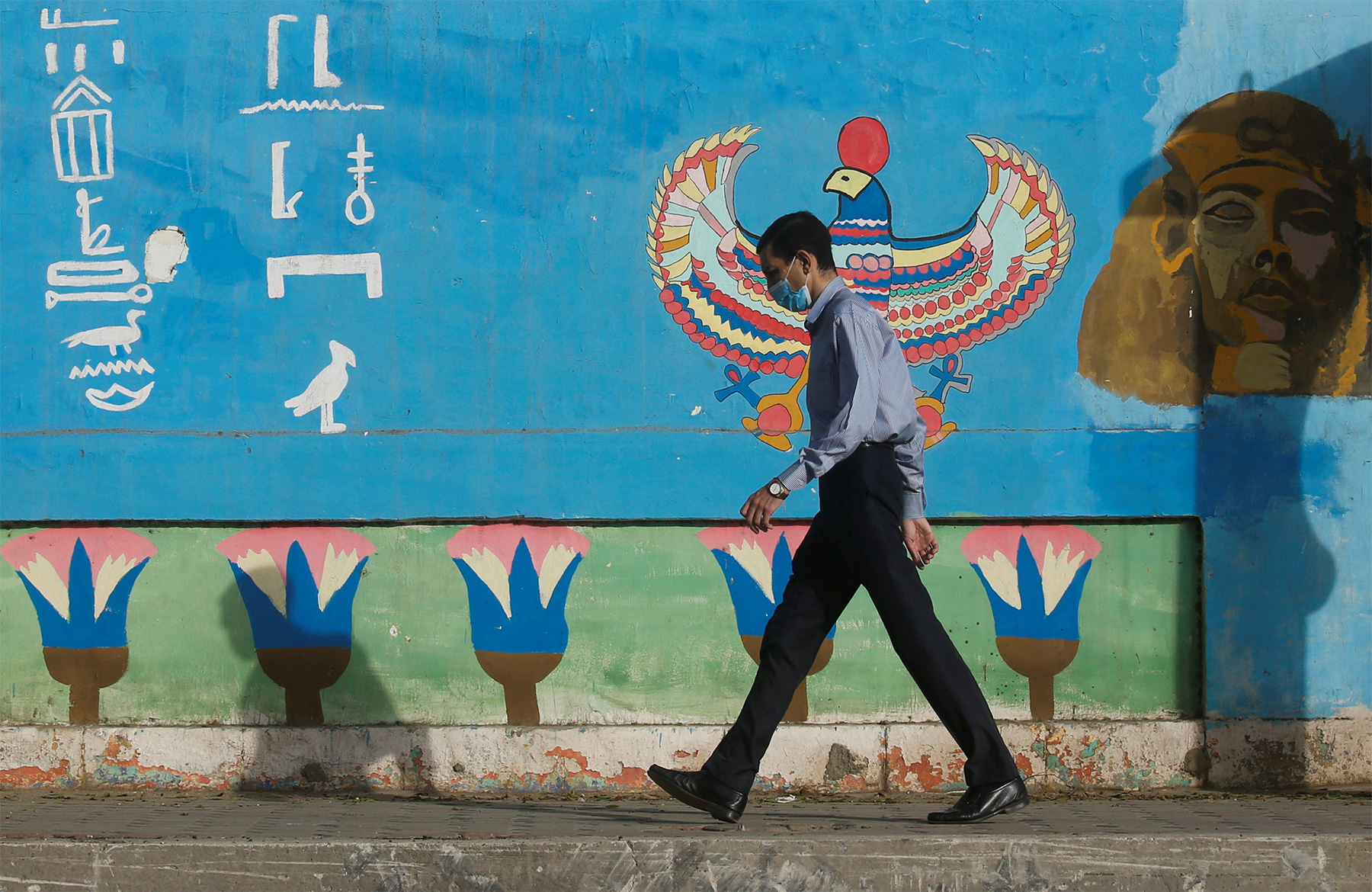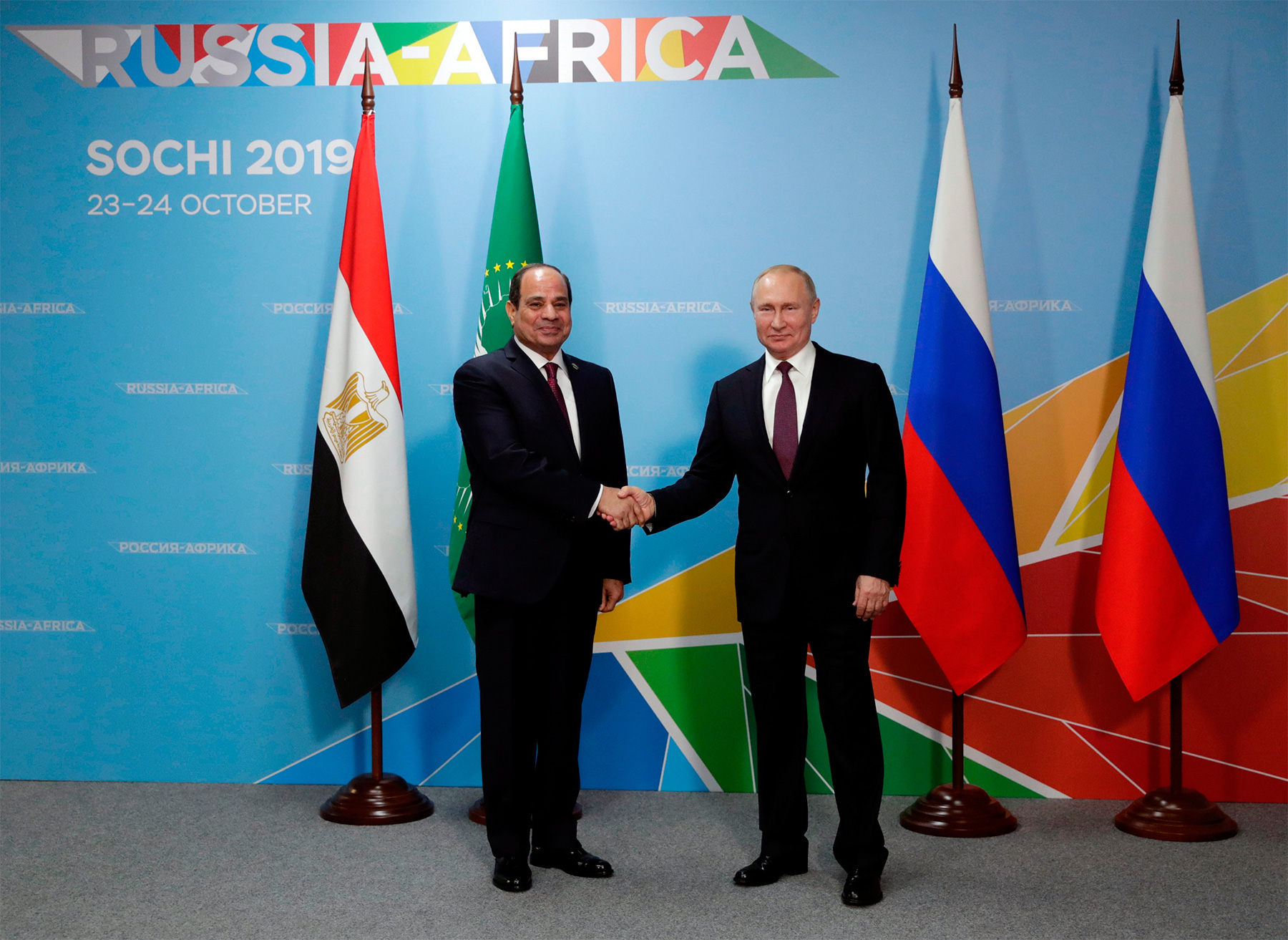Egypt has made great progress in implementing its national green economy strategy in cooperation with international donors and Egyptian businesses. The government is trying to create favorable conditions for private investors to finance green projects. As part of the state investment policy, in September 2020, Egypt became one of the first countries in the Middle East and North Africa that issued green bonds. The cost of debt securities was 750 million dollars. The bonds were intended for a portfolio of green projects in the amount of 1.9 billion dollars. Minister of International Cooperation Rania A. Al-Mashat announced that the Ministry issued these bonds to attract investment in environmentally friendly ventures. Perhaps these projects will be related to solving problems caused by climate change and environmental pollution.
The introduction of environmentally friendly solutions into the Egyptian economy is manifested in a variety of industries, including the automotive industry. Egypt aims to become a regional leader for electric vehicles in the MENA region. There were more than 60 electric buses, more than 200 electric vehicles, and more than 150 charging stations in Egypt in 2020. The development of the domestic green automotive industry is teaming up with the Chinese company Dongfeng, which together is working towards producing the first Egyptian electric car, the Nasr E70,with the Egyptian company El Nasr Automotive Manufacturing Company. The government is also trying to modernize the Egyptian transport system. The Egyptian government is restoring the tram system in Alexandria, reconstructing and expanding the Cairo metro, and electrifying railways.
Despite some progress in greening the economy, the transition to sustainable development in Egypt has its difficulties. For the effective functioning of the green economy, there is a need for qualified specialists who can work in environmentally friendly companies. In Egypt, the problems of corruption and the dominance of the military in the economy are still relevant. This does not allow more funding to be allocated to green projects, and also adversely affects the investment climate. However, Egypt continues to transform its economy. There is no doubt that the course toward sustainable development will help the country to diversify its economy, reduce environmental risks, and become better prepared for future regional and global crises.
On November 6 to 18, 2022, the 27th Conference of the Parties to the United Nations Framework Convention on Climate Change (COP-27) is taking place in Sharm el-Sheikh. Egypt hosting the World Climate Summit is a landmark event in the recent history of this country. In addition, this is an excellent opportunity to evaluate the effectiveness of the measures taken by the Egyptian government to protect the environment, as well as build a green economy.
The Egyptian economy is facing various challenges, including peculiarities surrounding agricultural development, demographic issues, threats to food security, and corruption. In addition, there are the regional and global impacts of the COVID-19 pandemic, the Russia-Ukraine conflict, and the global food crisis. By solving these problems, the Egyptian government may find an opportunity to make its economy greener. In 2016, Egypt adopted a sustainable development national strategy, Egypt Vision 2030, which aims at making the economy sustainable and inclusive.
In the long term, this strategy may prove to be winning. Futuristically speaking, it will help the government solve problems caused by climate change, the global food crisis, water scarcity, and healthcare challenges. Egypt’s orientation towards green development is already making it one of the leaders in the Middle East in building a green economy.
Egypt has made great progress in implementing its national green economy strategy in cooperation with international donors and Egyptian businesses. The government is trying to create favorable conditions for private investors to finance green projects. As part of the state investment policy, in September 2020, Egypt became one of the first countries in the Middle East and North Africa that issued green bonds. The cost of debt securities was 750 million dollars. The bonds were intended for a portfolio of green projects in the amount of 1.9 billion dollars. Minister of International Cooperation Rania A. Al-Mashat announced that the Ministry issued these bonds to attract investment in environmentally friendly ventures. Perhaps these projects will be related to solving problems caused by climate change and environmental pollution.
According to the Ministry of International Cooperation’s 2020 annual report, agreements worth 9.8 billion dollars were found to finance Egypt’s sustainable development. 6.7 billion dollars went towards the development of the public sector, and another 3.1 billion dollars went towards the development of the private sector. Perhaps the share of investment in green projects in the Egyptian economy will increase over the years. In 2020, the portfolio of Egypt’s Ministry of International Cooperation included 372 green projects worth 26.5 billion dollars in different sectors of the economy. Green economy projects accounted for 15% of the investment plan in 2020 to2021, while the government aims to reach 30% of green economy projects in 2021 to2022. The government expects that this share will reach approximately 50% by 2024.
The introduction of environmentally friendly solutions into the Egyptian economy is manifested in a variety of industries, including the automotive industry. Egypt aims to become a regional leader for electric vehicles in the MENA region. There were more than 60 electric buses, more than 200 electric vehicles, and more than 150 charging stations in Egypt in 2020. The development of the domestic green automotive industry is teaming up with the Chinese company Dongfeng, which together is working towards producing the first Egyptian electric car, the Nasr E70,with the Egyptian company El Nasr Automotive Manufacturing Company. The government is also trying to modernize the Egyptian transport system. The Egyptian government is restoring the tram system in Alexandria, reconstructing and expanding the Cairo metro, and electrifying railways.
Such a limited introduction of electric vehicles is rather a symbolic step in modernizing the economy to reduce carbon dioxide emissions into the atmosphere. At the same time, climate change in Egypt is quite a tangible problem, because agricultural land in some areas of the country’s northern coast faces constant flooding due to global warming. Under these conditions, commercial projects are being implemented in Egypt that combines cost-effectiveness with the solution of environmental problems, including the reduction of carbon dioxide emissions. In particular, BariQ recycles about 1.6 million plastic bottles per year in Egypt. The Egyptian Ministry of the Environment also launched the Safe Disposal of Electronic Waste program. The project is being implemented in partnership with the UN and the Egyptian private sector. The program aims to motivate Egyptians to safely dispose of e-waste. There is a system which encourages citizens who to discard electronic waste within the framework of this program. Later, the waste is sent to factories for further processing.
It is impossible to make the economy greener without energy transformation. One of the largest green energy projects in Egypt is the El Dabaa nuclear power plant. The launch and further operation of the El-Dabaa nuclear power plant will strengthen energy security, and it will also become a driver of economic development. The electricity generated at El-Dabaa will help reduce greenhouse gas emissions by minimizing other methods of generating electricity. About 590 million dollars will be allocated annually from the budget for servicing the power plant. According to Rosatom, Egypt will receive up to 4 billion dollars a year due to the sale of electricity to domestic and foreign markets. The launch of the nuclear power plant will also have other indirect positive economic results. For example, it will create up to 50,000 additional jobs.
Introducing renewable energy sources is also vital for the successful development of Egypt’s green economy . According to official statistics, only 9% of the electricity in the country came from renewable energy sources in 2016. Now, Egypt is implementing the program called the Integrated Sustainable Energy Strategy. Its goal is to expand the use of renewable energy sources and increase energy efficiency. The Egyptian government plans to provide 20% of the country’s energy needs from renewable energy sources by the end of 2022—this figure is expected to increase to 42% by 2035. Private investors may take an active part in this. According to the Renewable Energy Law, the private sector is encouraged to participate in the country’s green transformation strategy and produce electricity from renewable energy sources.
Wind farms are being built all around Egypt, as well as enterprises for green hydrogen production. In 2021, a directive to develop an Egyptian green hydrogen strategy was issued. Among the largest projects, it is worth highlighting that the construction of Ain Sokhnan plant, which will produce environmentally friendly hydrogen, is now under construction—with the assistance of Scatec, a Norwegian company. The plant is planned to be operational by 2024.
One of the key areas of alternative energy sources in Egypt is solar energy, and the government pays great attention to it. From 2019 to2021 Egypt has built at least 126 solar power plants, some of which were built together with French companies. Major Egyptian energy companies partner up with Chinese companies to produce solar panels. In particular, the Egyptian company Enara, is collaborating with the Chinese energy company Chint to implement a project aimed at producing solar panels.
In 2019, Egypt launched one of the world’s largest solar installations, located in Benban Solar Park. The complex includes 32 solar power plants with a total production capacity of 1465 MW. There are about 6 million solar panels on the territory of the complex. The cost of the project is about 2.4 billion dollars.
Benban Solar Park is an illustrative example of fruitful cooperation between the government, the private sector, and international financial institutions. The project involves about 40 companies from 12 different countries. The construction of the Benban solar park was partly funded by the World Bank. The operation of the park helps to stabilize electricity prices, strengthen Egypt's energy security, and reduce greenhouse gas emissions. In addition, it creates additional jobs, which helps in solving the problem of unemployment.
Due to its geographical position, Egypt has great potential for the development of this area of renewable energy sources. However, the introduction of solar energy requires significant investments. Solar panel prices remain very high and prices are unlikely to come down.
Although solar-powered technology is expensive, it can save money in some cases and eliminate the problems associated with the failure of irrigation pumps. Solar panel installment is a one-time payment; a reason why solar energy in Egypt is actively used in the agricultural sector [1]. The emissions produced by this industry account for about 13% of annual greenhouse gas emissions.
Due to the great distance from the river Nile and upland locations, some villages have been extracting water from wells for many years using diesel engines. The unavailability of diesel fuel in some cases limited farmer productivity. Over the past five years, there has been an increase in demand for solar panels, driven by higher diesel and electricity prices.
The government tries to help farmers and implements different programs with international organizations. Particularly, there is a project implemented together with the UN World Food Program to support about 1 million Egyptian farmers living in 500 villages. The program promotes the use of solar power plants in agriculture and the improvement of irrigation efficiency.
However, the initiative to install solar panels to provide work on agricultural land does not always receive support from the authorities. Sometimes farmers have to install such panels at their own expense. In some cases, smallholders cooperate with their neighbors to use solar power to extract water to further irrigate the land.
Egypt is likely to face additional financial and environmental costs in the future. This will be caused by the intensive use of groundwater, irrigation system modernization, farmer training in new irrigation methods, as well as the use of space technology to identify land where water use is not feasible. However, the gradual transition to renewable energy sources contributes to the reduction of water use in the energy sector. That is why the use of green energy in the field of water security will increase.
The area of water management is especially important for Egypt. Nowadays, all North African countries face an acute problem of water and food shortages, and the Egyptian government is looking for ways to solve this problem. Currently, Egypt is leading some regional initiatives aimed at drawing the attention of the world community to the problems of water security. Egypt adopted a strategy in 2018 to mitigate the effects of water scarcity. Its insufficiency is caused by climate change, as well as growing consumption. The National Water Conservation Strategy is being implemented jointly with European partners who are participating in the financing of projects to improve water supply and wastewater treatment.
Egypt is implementing some major projects aimed at improving the efficiency of water resources management and ensuring water security. One of the largest projects is the Al Mahsama Water Reclamation Plant installed on the Sinai Peninsula. This is one of the largest complexes of agricultural wastewater treatment plants in the world. The plant recycles water, and the water that has passed through the facilities makes it possible to cultivate about 70,000 acres of land.
Egypt's commitment to the transition to a green economy helps to meet increased energy demand, in addition to diversifying electricity generation. Green projects stimulate economic growth, help attract investment to the country, and strengthen energy, food, and water security. This is especially important in a population boom. The population in Egypt rises by about 2% per year. According to experts, by 2030, 128 million people will live in the country. Along with the high population growth, the need for energy resources also increases. In addition, the issue of unemployment is acute, because most young people under 30 are currently unemployed. The transition to a green economy also partly solves the problem of unemployment, because creates additional jobs.
An additional driver for the development of green energy in Egypt is the confrontation between Egypt and Ethiopia around the hydroelectric power station of Hidase. The construction of the Grand Ethiopian Renaissance Dam poses a threat to Egypt because it will lose a significant part of its water resources. This would negatively affect the productive capacity of the Aswan Hydroelectric Power Plant and undermine Egypt’s energy security. If the current rate of filling the reservoir of hydroelectric power stations is maintained, Egypt will be forced to reduce production by billions of dollars in the future. Despite Cairo's demands for a more equitable distribution of water resources, the Ethiopian authorities will not meet him halfway. Under these conditions, the diversification of electricity generation can strengthen the energy security of Egypt. This is one of the reasons why the El Dabaa nuclear power plant and other green energy projects are so important.
Despite some progress in greening the economy, the transition to sustainable development in Egypt has its difficulties. For the effective functioning of the green economy, there is a need for qualified specialists who can work in environmentally friendly companies. In Egypt, the problems of corruption and the dominance of the military in the economy are still relevant. This does not allow more funding to be allocated to green projects, and also adversely affects the investment climate. However, Egypt continues to transform its economy. There is no doubt that the course toward sustainable development will help the country to diversify its economy, reduce environmental risks, and become better prepared for future regional and global crises.
First published in collective monograph: Бочаров И.А., Бочаров М.А. Основные тенденции развития зеленой экономики в Египте // Страны Востока и Россия в глобальных процессах [Текст]: коллективная монография / Институт востоковедения РАН, Центр аграрных исследований и продовольственной безопасности [отв. ред. и сост. И. В. Дерюгина]. — М: ИВ РАН. — 2022.
1. Agriculture sector makes up more than 33% of the Egyptian economy.









